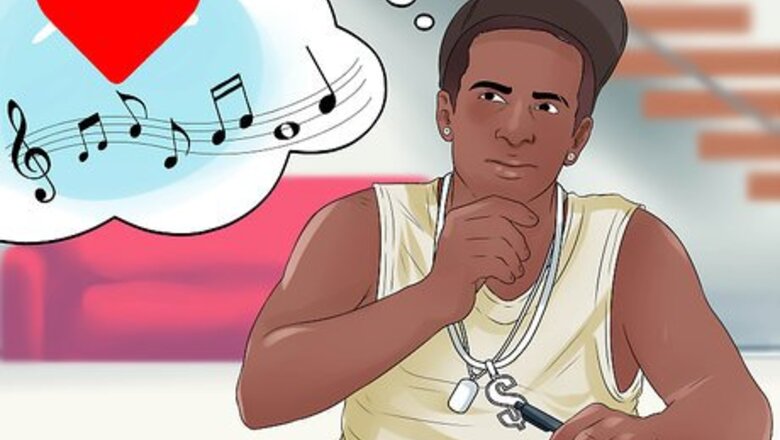
views
Laying the Groundwork for Your Rhyme

Choose a subject you're passionate about. You might also choose something that you feel strongly about, like a loss, a love, or a struggle in your life. The fact is, you're going to have to spend time crafting your rhyme word by word. If your subject isn't meaningful to you, you'll likely find that the lyrics you come up with are uninspired and struggle with finishing your rap. For more advanced rappers, you might want to go out of your way to choose topics that you aren't passionate about. Experienced rhymesters can sharpen their skills on the challenge posed by less interesting subjects.
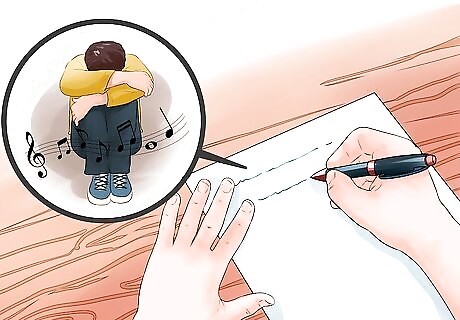
Write about the subject of your rap. Do this long form, in several paragraphs or a large block of text. Try to include different perspectives about your topic, emotional points, and related concepts. This will help you build a pool of themes from which you can draw when working on the rhymes in your rap.. The more intimately you know your subject and ideas associated with it, the more ammunition you will have when writing. To further develop your topic, you might want to journal about it over the course of a few days. Ask your friends and people who might be part of your target audience about personal experiences they have had with your topic. This may yield useful examples for your rhyme writing.
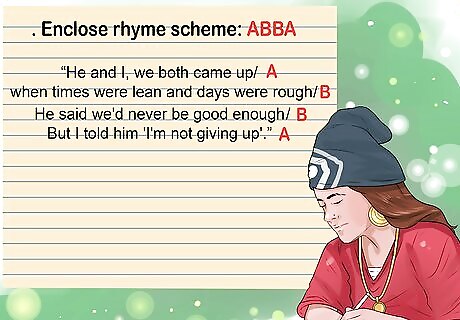
Set your rhyme scheme. There are many different patterns of rhyme you can utilize in your rap. This is called "rhyme scheme," and it is usually expressed by representing same-rhyme lines with the same letter. For example, if your first and second line rhyme, and your third and forth line have a different rhyme but also are the same, the rhyme scheme would be AABB. An example of this might look like, "I am a rapper, / Not a lip flapper / I don't play a game / My rhymes are never lame." Some classical rhyme schemes you might try include: A Boy Named Sue rhyme scheme: AABCCB Ballade rhyme scheme: ABABBCBC Enclosed rhyme scheme: ABBA "Fire and Ice" rhyme scheme: ABAABCBCB Ode rhyme scheme: ABABCDECDE The Raven rhyme scheme: ABCBBB

Identify key words and potential rhymes. Now that you've got a pretty solid idea what topic you'll be rapping about and the kind of rhyme scheme you'll be using, it's time you brainstormed potential useful rhymes. For example, if you know you'll be rapping about a romantic situation and you plan on using the word "love," you may want write up as many rhymes for this word as you can. A rhyming dictionary can be a tremendous asset when trying to find rhymes for particular terms. Many free rhyming dictionaries can be found online through a general Internet search.

Know and use expert poetry techniques. Most musical lyrics, including rap, make use of poetry techniques. Slant rhyme, for example, creates an imperfect rhyme between two similar sounding words, like orange and door hinge. This example also illustrates a multi-syllable rhyme, where one syllable of a multi-syllable word rhymes with a previous word. Another example of a multi-syllable rhyme (sometimes called a "multi") would be "I don't make any false rhyme claim / No more than I'd disrespect your grand dame." Another important part of the structure of your rhymes is syllable structure. The syllables in each line will create a beat in your rap. Generally, by drawing out a line with too many syllables, or making a line too short with too few syllables, you can disrupt the beat of your rap. Avoid this by trying to balance rhyming lines to have the same number of beats.

Practice by imitating favorite songs. As the saying goes, you can achieve greater heights by standing on the shoulders of giants. Look at the structure of one of your favorite rappers rhymes and, using your own topic, try to imitate it. Once you're satisfied with that, try to put your own spin or flavor on the rap. You could play with the rhyme structure, add a line to see if it builds tension, and so on.
Writing Your Rap
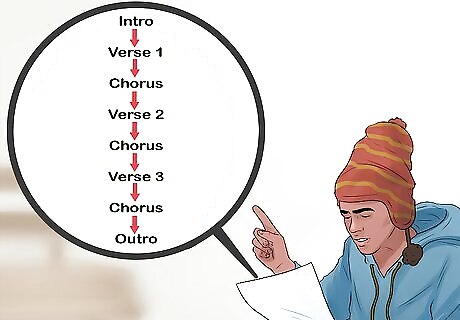
Familiarize yourself with the basic structure for a rap. The general outline for most rap songs follows the pattern of Intro → Verse 1 → Chorus → Verse 2 → Chorus → Verse 3 → Chorus → Outro. Depending on your content, speed of delivery, and the effect you want to have on your audience, your verses and chorus could be long or short, your verses could be short and your chorus longer, or any arrangement you choose. As an example, if you are trying to write a rhyme to get the club hyped, you'll probably want to keep your verses short and full of punch. Opposite of this, a slam poetry jam might do better with longer verses to tell a more engaging story.
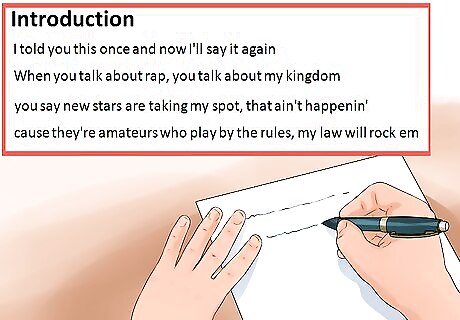
Write a catchy intro. If the opening of your rap doesn't have a hook, you might lose the interest of your audience with the first verse. A powerful statement works well for opening your rap, or a hook that catches the audience's interest. You might hint that things are not what they seem, or that something is about to happen.

Chose a strong chorus. Since your chorus will likely be repeated multiple times, you'll want it to be catchy but not repetitive. This can be a difficult task, and you might have to spend some time tweaking it until you are satisfied. Your chorus should generally be related to your topic and should connect to your verses. Think of your chorus as a bridge that connects all the parts of your rap together. You could make your chorus strong by making it the central point of your rap. For example, if you're rapping about an old friend, you might use a chorus like, "He and I, we both came up / When times were lean and days were rough / And though we were just two young pups / He said we'd never be good enough / But I told him 'I'm not giving' up' ."
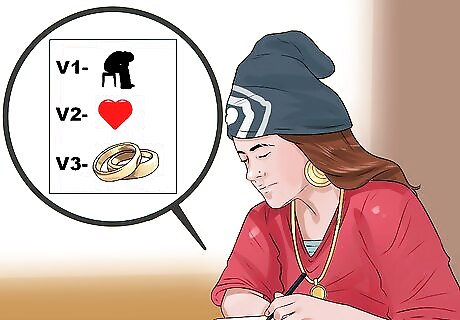
Develop your verses. It may help you to determine the goal in each verse before you start writing the words and trying to rhyme. For example, in a rap about romance you might decide that Verse 1 should be about loneliness, Verse 2 about falling in love, Verse 3 about where you think that love will lead. Once you have a general idea for your verses, it's time to start writing! Use the ideas you've come up with when writing about your topic, the key words and the rhymes for those key words you've brainstormed, and write those verses.
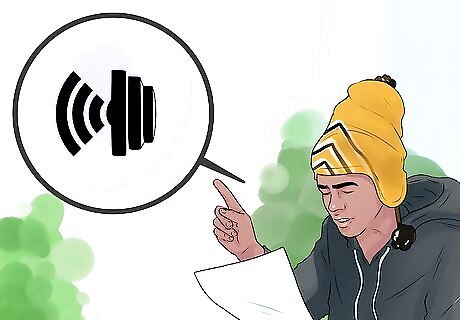
Read your rap out loud. Especially when you have been working on a rhyme for a long time, it can start to sound funny in your head. Or sometimes you might imagine a rhyme is stronger or sounds better in your head than it does when spoken. To prevent your rhymes from falling flat when being performed, read them out loud to yourself and others.
Practicing Your Rap

Find a beat you like. You can pull a beat off a wordless karaoke track or from samples on common audio production software like Evernote, Fruity Loops, GarageBand, or Ableton, to name a few. You might also have a friend who is musically talented help you out by making a simple beat on a drum kit. An affordable option to get a beat for your rap that won't require equipment is beat-boxing. Simply have a friend with beat-boxing talent accompany you as you rap.
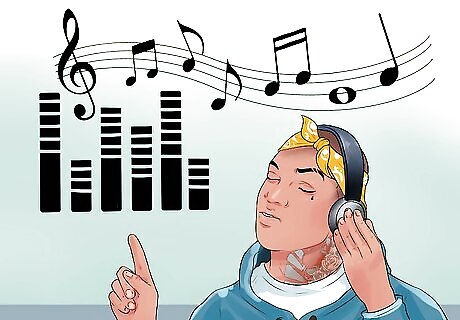
Listen to the beat. You'll want to have a good feel for its rhythm and tonal movement up and down, which is also called cadence. This will help you to rap in a way that flows smoothly in time with the beat. Steady rhythm is a great way of checking your rap for syllabic balance. If the syllables in your lines don't match up evenly to the beat, you may have to remove or add some words.

Get feedback on your rap. Ask some friends who know how to rap to read yours. After they have, ask for suggestions or if they think there are any weak points you could improve. You might also want to read your rap to an impartial audience. Sometimes friends or family can be too nice when giving feedback.

Revise your rap with your friends' suggestions. Make sure to keep the flow of the rhymes going while you improve the rap. Stick to your rhyme scheme, keep syllabic balance between lines, and take pride in all your hard work.




















Comments
0 comment